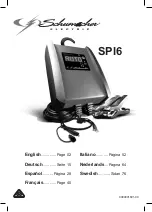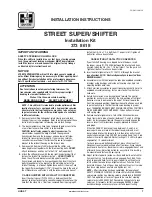
R (Reverse)
Never engage R while the car is moving forward.
N (Neutral)
Neutral - no gear engaged. Use the parking brake.
D (Drive)
D is the normal driving position and should be used as often as possible to help improve fuel
economy. The car should not be moving when shifting from R to the D position.
3 (Intermediate gear)
The transmission will shift automatically between gears 3, 2 or 1 from this position.
The
transmission cannot shift up to (D)rive (D) from third gear.
2 (Intermediate gear)
The transmission will shift automatically between gears 2 and 1 from this position.
The
transmission cannot shift up to third gear from second gear.
1 (Low gear)
If you select this gear at speeds above 30 mph (50 km/h), the transmission will first shift to second
gear and then to first gear at lower speeds.
NOTE:
The intermediate and low gears can be used for:
Driving in a mountainous area
Towing a trailer
Increasing the braking effect of the engine.
The transmission has a built-in limiter designed to help prevent excessive engine speeds (high
rpm) when gears 3, 2 or 1 are selected.
Kickdown
Automatic shift to a lower gear (kickdown) is achieved by depressing the accelerator pedal fully and
briskly. An upshift will occur when approaching the top speed for a particular gear or by releasing
the accelerator pedal slightly. Kickdown can be used for maximum acceleration or when passing at
highway speeds.
Automatic transmission - adaptive system
The automatic transmission is controlled by an adaptive control system that constantly monitors the
way in which the transmission functions. It senses and adapts each gear shift for optimal
performance. The system also monitors your particular driving style and adapts gear shifting
accordingly.
Never leave the car unattended when the engine is running. If, by mistake, the gear selector is
moved from P, the car may start moving.
pg. 75 Automatic transmission
Page 6 of 11
2003 Volvo S80
8/10/2005
http://apps.volvocars.us/ownersdocs/2003/2003_S80/03s80_06a.htm
















































